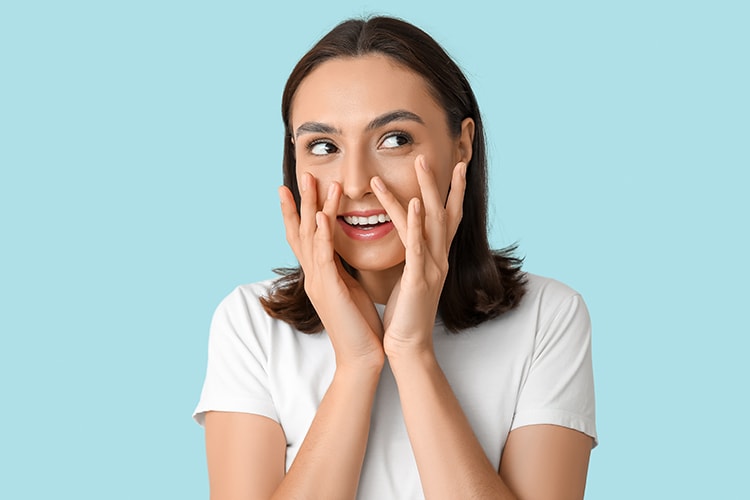
Recovering from rhinoplasty is a gradual process that happens over several weeks. Understanding what to expect with the timeline can help you prepare and ensure smooth healing. Although everyone heals at a different rate, our board-certified plastic surgeon, Dr. Jon Kurkjian, has provided the following guide:
Week 1: Immediate Healing
In the first week, you may experience swelling, bruising, and congestion. A splint is used to protect your nose’s new shape, and you should keep your head elevated and rest. Most patients attend a follow-up visit on day one and have the splint removed after one week. You can return to non-strenuous activities after about seven days.
Week 2: Swelling and Bruising Fade
By the second week, much of the swelling and bruising should subside, though some puffiness may still be present. You’ll likely feel more comfortable resuming normal social activities as your appearance improves.
Weeks 3-4: Gradual Improvement
Swelling continues to decrease, and breathing becomes easier. You’ll attend another post-op visit around week three or four. Light to moderate exercise may be reintroduced, but avoid any extremely strenuous activities.
Weeks 5-6: Approaching Normalcy
By this point, you should look and feel more like yourself. Studies indicate that typically 50% or more of the swelling should be gone, although subtle changes may continue for several months. At your next follow-up, Dr. Kurkjian will assess your healing.
6 Months to 1 Year: Final Results
It can take up to a year for you to see the full results of your rhinoplasty. Swelling deep in the nasal tissues should slowly diminish, and the final contour of your nose should be apparent.
By understanding the rhinoplasty recovery process, you can better prepare for each phase for a smoother healing experience. If you have any questions about rhinoplasty recovery, contact Kurkjian Plastic Surgery + Aesthetics today.